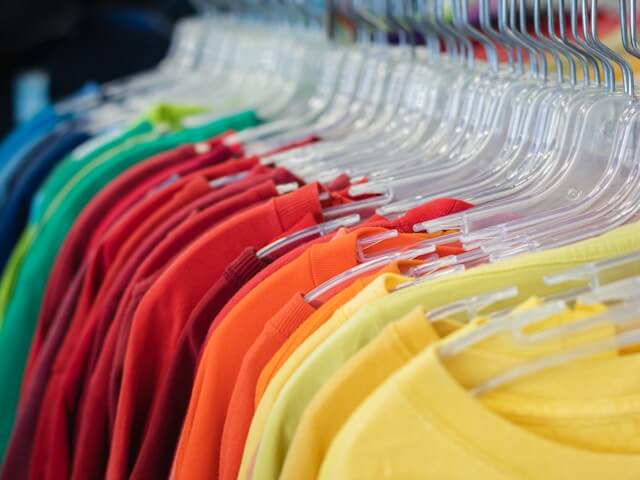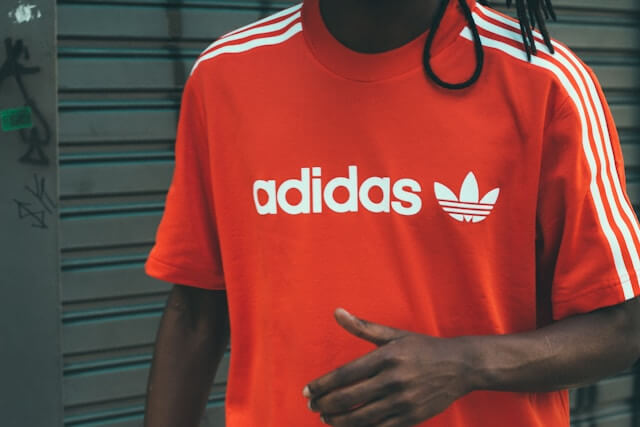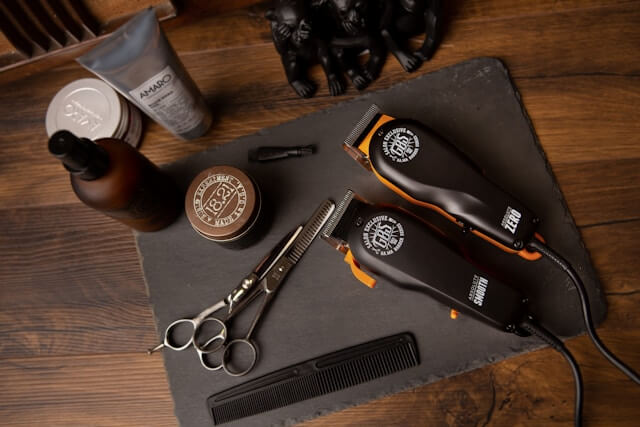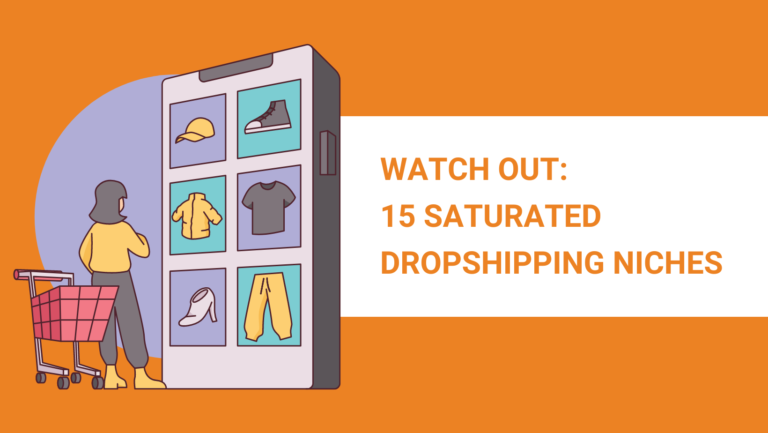Dropshipping has become a go-to business model for many aspiring entrepreneurs in the eCommerce world.
However, saturated niches make it harder to achieve profitability due to the intense competition.
Avoiding saturated dropshipping niches can significantly improve your chances of running a successful store. By steering clear of these common pitfalls, you can find more profitable and less competitive areas.
This article focuses on identifying saturated dropshipping niches and provides insights on how to navigate these challenges. Understanding which niches to avoid allows you to better allocate your resources and efforts.
Key Takeaways
- Choosing the wrong niche can hinder your dropshipping success.
- General clothing and electronics are highly saturated and competitive.
- Recognizing and avoiding saturated niches is essential for profitability.
What Does Saturated Mean in Dropshipping?

When a product is saturated in dropshipping, it means the market is flooded with the same or very similar products. Many dropshippers offer these items, creating high competition. As a result, becoming profitable becomes challenging.
Market saturation happens when there is more supply than demand. This often leads to lower profit margins since many sellers are vying for the same customers.
Examples of high saturation include general electronics and apparel. These niches have too many vendors selling identical or closely related items, making it hard to stand out.
Implications of Market Saturation
- Increased competition: More sellers mean more options for buyers, leading to price wars and lower prices.
- Lower profit margins: With prices dropping, your profit per sale decreases.
- Market entry challenges: New entrants find it hard to compete with established sellers who may have better reviews and customer loyalty.
15 Saturated Dropshipping Niches to Avoid
1. General Clothing

General clothing is often considered an attractive niche due to its ever-present demand and variety of products. However, the high competition within this market makes it particularly difficult for new dropshippers to establish themselves.
General clothing includes everyday apparel such as t-shirts, jeans, dresses, and outerwear. The global apparel market was estimated to be worth US$768.7 billion in 2023.
High competition is driven by both large, established brands and numerous small retailers. Fashion trends also change rapidly, requiring constant product updates.
Platforms like Shopify and WooCommerce are commonly used by sellers in this niche, adding to the saturation.
Pros
- High Demand: Clothing is a basic necessity, ensuring a steady market.
- Product Variety: Offers a wide range of products, from casual wear to formal attire.
- Seasonal Sales: Opportunities for increased sales during holidays and seasonal changes.
- Global Market: Room to target various demographics and regions.
Cons
- High Competition: Many retailers and dropshippers make it hard to stand out.
- Fast-Changing Trends: The need to keep up with fashion trends can be costly and time-consuming.
- Inventory Management: Difficulty in maintaining stock levels and dealing with sizes and returns.
- Low Margins: Intense price competition leads to lower profit margins.
Profitable Alternatives
If you want to stand out in the clothing niche, focus on specific sub-niches with loyal audiences or unique value propositions:
- Sustainable or Organic Apparel: Eco-conscious fashion made from organic cotton, bamboo, or recycled fabrics. It attracts a growing market of environmentally aware buyers.
- Pet or Hobby-Themed Clothing: T-shirts or hoodies featuring pet breeds, hobbies, or fandoms, these niches are emotionally driven and easier to brand.
- Athleisure and Lounge Sets: Blends comfort with style; ideal for home and casual wear post-pandemic.
2. General Electronics

General electronics include items like earphones, chargers, and phone cases. Due to their universal appeal and everyday utility, these products have become highly competitive markets.
Market leaders like Apple and Samsung dominate with high-quality gadgets and accessories.
The widespread availability of these products across various platforms has led to market saturation. General electronics frequently face high return rates due to malfunctions, further complicating the business.
Additionally, consumer trust issues regarding product quality impact smaller dropshippers.
Pros
- High Demand: Consumer electronics are always in high demand due to constant technological advancements.
- Wide Range of Products: There is a vast array of products you can sell, from headphones to phone accessories.
- Easy to Source: Many suppliers offer these items, making it easy to find inventory.
- Trendy Market: Frequently updated technology keeps the market lively and engaging.
Cons
- High Competition: The market is flooded with numerous sellers, making it tough to stand out.
- Low Profit Margins: Due to competition, prices are often driven down, reducing profitability.
- High Return Rates: Electronics often have issues, leading to high return rates and customer dissatisfaction.
- Quality Control Issues: Without a trusted supplier, it’s hard to ensure consistent product quality.
Profitable Alternatives
Instead of competing in the crowded general electronics space, focus on niche tech categories that emphasize problem-solving, innovation, or personalization:
- Eco-Friendly Tech Accessories: Solar chargers, biodegradable phone cases, or energy-saving gadgets attract environmentally conscious consumers.
- Home Office Tech: Desk organizers with built-in chargers, webcam covers, or ergonomic stands cater to the remote work trend.
- Pet or Smart Home Devices: Affordable smart feeders, lights, or sensors are part of the growing smart home market with fewer established competitors.
3. Watches

The watch dropshipping niche is highly competitive due to the presence of well-known brands and the popularity of both luxury and budget-friendly timepieces.
The market for watches is vast and includes luxury brands like Rolex and Apple Watch, as well as more affordable options from Seiko and Casio.
Despite the overall market value projected to grow to $117.8 billion by 2025, the saturation level is notably high. Many sellers enter this niche aiming for high margins, but the market is crowded with numerous players.
Market research reports suggest that the demand remains high, yet the competition makes it challenging for new entrants to establish themselves.
Pros
- High Demand: Watches are always in demand, appealing to a wide range of customers looking for stylish and functional timepieces.
- Variety of Products: From luxury watches to fitness trackers, this niche offers a diverse range of products to sell.
- Potential for High Margins: Well-marketed, high-quality watches can bring substantial profit margins.
- Branding Opportunities: This niche allows for creative branding strategies, which can differentiate your store from competitors.
Cons
- High Competition: The watch dropshipping market is saturated with numerous sellers, making it tough to stand out.
- Knowledge Requirement: To be successful, you need a good understanding of watches, including quality and features, which can be time-consuming to learn.
- Potential for Low-Quality Products: It’s easy to be tempted to sell low-quality or imitation watches, which can lead to dissatisfied customers and high return rates.
- Price Sensitivity: Many consumers are price-sensitive, which can lead to lower profit margins if you compete primarily on price.
Profitable Alternatives
Rather than competing head-on with mainstream watch brands, focus on specialized or experience-driven niches that offer clearer differentiation:
- Smart Fitness Trackers: A fast-growing category driven by health-conscious buyers, with strong demand but less brand dominance in mid-range models.
- Wooden or Eco-Friendly Watches: Unique, sustainable, and ideal for branding toward eco-conscious or minimalist consumers.
- Customizable or Engraved Watches: Personalization adds emotional value and helps justify higher price points.
- Kids’ Smartwatches or GPS Watches: Parents are increasingly buying affordable, safety-focused wearables for children.
4. Fragile Items

Fragile Items in dropshipping include products like mirrors, ceramics, glassware, and similar delicate goods. This niche faces saturation due to the high demand for specific fragility and the increased competition from numerous sellers.
Market competition is fierce, driven by the desire to offer distinctive and stylish items. Platforms like Amazon and eBay are flooded with these items, making it harder for new sellers to stand out.
Additionally, high return rates due to shipping damages and high-quality expectations further saturate this market.
Pros
- High Demand: There’s always a strong market for attractive and functional fragile items, especially for home décor.
- Variety of Products: This niche provides a broad range of products, from glassware to pottery, allowing for diverse inventory.
- Aesthetic Appeal: Items often appeal to consumers’ sense of style and aesthetics, helping in marketing efforts.
- Seasonal Sales: Festive seasons and holidays can boost sales significantly with themed and giftable items.
Cons
- Shipping Challenges: Risk of damage during shipping is high, leading to potential losses and customer dissatisfaction.
- High Competition: Saturation in the market makes it difficult to compete, especially with established brands and stores.
- Return Rates: Increased likelihood of returns due to breakage or minor imperfections can affect profit margins.
- Storage Issues: Storing fragile items requires extra care and space to prevent damage, which increases overhead costs.
Profitable Alternatives
To avoid the risks associated with fragile products, look for durable, lightweight items that still tap into similar buyer intent, home improvement, style, or gifting:
- Silicone Kitchenware & Tableware: Durable, lightweight, and stylish, perfect for décor-conscious shoppers who want functionality.
- Resin Home Décor: Visually appealing like glass or ceramic but far less fragile, ideal for personalized or handmade-themed stores.
- Acrylic Wall Art or LED Décor: Offers the same aesthetic value as glass but ships safely and appeals to modern home design trends.
- Eco-Friendly Bamboo Accessories: Great for kitchen, bath, or desk organization niches; durable and sustainable.
5. Bulky or Heavy Items

Bulky or heavy items such as indoor furniture and large appliances may seem profitable, but they come with specific challenges. High shipping costs and storage issues are significant factors that make this niche less desirable.
The market for these items is highly competitive, making it saturated. Companies like IKEA dominate this space, setting high standards for affordable and reliable shipping.
The complexity of handling large items significantly increases logistical challenges, contributing to the saturation as many dropshippers find it hard to compete.
Pros
- High Ticket Prices: Bulky items usually sell at higher prices, potentially increasing your profit margins.
- Substantial Market Demand: There is a consistent demand for items such as furniture and appliances, especially with the rise of remote working.
- Perceived Value: Customers often perceive higher value in larger, more substantial products, which can lead to better customer satisfaction.
Cons
- High Shipping Costs: Shipping fees for bulky items are significantly higher, which could deter potential buyers.
- Storage and Handling: Managing stock can be complex as bulky items require more space and careful handling to prevent damage.
- Complex Returns: Returning bulky items often leads to higher costs and logistical challenges, impacting your overall profitability.
- Competition: The market is saturated with well-established brands, making it tough for new entrants to stand out.
Profitable Alternatives
Instead of selling bulky or heavy goods, focus on compact, lightweight, and easy-to-ship products within similar lifestyle or home categories:
- Foldable or Space-Saving Furniture: Portable desks, collapsible shelves, or modular organizers for small apartments.
- Home Office Accessories: Ergonomic laptop stands, footrests, or compact desk décor, benefiting from ongoing remote work trends.
- Inflatable or DIY Furniture Kits: Easy to ship, high perceived value, and increasingly popular with renters and students.
- Home Improvement Tools & Accessories: Lightweight DIY gadgets, peel-and-stick décor, or portable lighting solutions.
6. Copyrighted Products

Copyrighted products are items that bear logos, characters, or designs protected by intellectual property laws. These include merchandise from popular franchises such as movies, video games, and sports teams.
The market for copyrighted products often includes toys, clothing, and accessories featuring beloved characters and symbols. The demand is driven by fan loyalty and the popularity of franchises.
However, this niche has attracted numerous sellers, leading to fierce competition and market saturation. Major players in this field already dominate sales, making it tough for new entrants to gain traction.
Moreover, licensing restrictions are strict. Unauthorized selling of these items can lead to severe legal repercussions. According to industry reports, consumer interest remains high, but the risks involved make this niche highly precarious.
Pros
- High Demand: Fan merchandise often sees consistent demand due to a dedicated customer base.
- Brand Recognition: Products are instantly recognizable and can attract a large audience quickly.
- High Profit Margins: Popular items can sell at premium prices, leading to potentially high profits.
- Seasonal Booms: Events such as movie releases or sports seasons can lead to surges in sales.
Cons
- Legal Risks: Selling unauthorized copyrighted products can result in lawsuits and heavy fines.
- High Competition: Established sellers and official merchandise stores dominate the market.
- Licensing Costs: Obtaining the necessary licenses can be expensive and time-consuming.
- Supply Chain Issues: Ensuring the availability of high-demand items can be challenging.
- Limited Control: Restrictions on marketing and product customization reduce flexibility.
Profitable Alternatives
To capture fan enthusiasm without legal risk, target inspired, original, or customizable niches:
- Fan-Inspired or Aesthetic Merch: Create designs inspired by genres or themes (e.g., “wizard academy” instead of Harry Potter). Emotional connection, not branding, drives sales.
- Custom Artwork & Pop Culture Prints: Partner with independent artists to create character-style prints, posters, or apparel. Platforms like Printful or Gelato make fulfillment easy.
- Personalized Gifts: Offer name-based or zodiac-themed products that allow for creativity without copyright issues.
- Hobby & Collector Accessories: Instead of selling copyrighted items, sell display cases, storage racks, or cleaning tools for collectibles, a smart way to serve fans legally.
7. Shoes

The shoes niche in dropshipping includes a variety of footwear products such as sneakers, casual shoes, formal shoes, and specialized athletic footwear. This niche has high competition due to the large number of sellers and demand for trendy styles.
Popular shoes like Nike and Adidas dominate, leaving little room for new entrants. The market is driven by seasonal trends, celebrity endorsements, and limited editions.
According to industry reports, the global footwear market was valued at $365.5 billion in 2020, with a projected growth rate of 5.5% annually.
Main channels such as DHgate cater to this market with a diverse range of products. Due to the popularity of eCommerce sites, many sellers enter this niche annually, contributing to its saturation.
Pros
- High Demand: Shoes are essential items with steady year-round demand.
- Wide Variety: There is a broad range of products, from everyday wear to specialized athletic footwear.
- Easy Scaling: Once established, adding new designs and brands to your inventory can be straightforward.
- Fashion Appeal: Trends and brand loyalty can drive high sales, particularly if you manage to stock trending items.
Cons
- Heavy Competition: Numerous sellers in the market can make it difficult to stand out.
- Brand Dominance: Established brands like Nike and Adidas make it challenging to compete on quality and recognition.
- Returns and Size Issues: High return rates due to size mismatches and product dissatisfaction can hurt profitability.
- Seasonal Trends: Rapidly changing fashion trends may result in excess inventory if you’re not quick to adapt.
Profitable Alternatives
Rather than entering the crowded general shoe market, explore specific lifestyle or design-oriented sub-niches that have growing demand but lower competition:
- Orthopedic or Comfort Footwear: Aging populations and work-from-home lifestyles are fueling steady growth in ergonomic shoe designs.
- Eco-Friendly or Vegan Shoes: Made from recycled or plant-based materials, highly appealing to sustainability-conscious shoppers.
- Custom or Printed Sneakers: Personalized shoe designs or limited-run drops can create scarcity and brand identity without major competition.
- Home & Indoor Footwear: Slippers, slides, and cozy indoor shoes gained massive traction post-pandemic and continue to perform well.
8. Seasonal Products

Seasonal products often see high demand during certain periods, making them attractive for short-term profits. Notable products in this niche include Halloween costumes, Christmas decorations, winter hats, and bikinis.
The market for seasonal items is heavily influenced by holidays and weather patterns, creating cycles of high and low sales.
High competition is a significant factor leading to saturation. Many dropshippers enter the market simultaneously, driving down prices and profit margins.
Industry reports show that while these products can be immensely profitable at peak times, the off-season can lead to inventory surplus and reduced sales.
Pros
- High Demand Peaks: Seasonal products can generate substantial sales in a short period, especially during holidays.
- Trend Exploitation: You can capitalize on trending items each season, boosting visibility and sales.
- Niche Marketing: Focused marketing strategies can be highly effective due to the specific target audience.
Cons
- Fluctuating Demand: Sales can plummet drastically outside the peak season, leading to unpredictable revenue.
- Inventory Management: Managing inventory becomes challenging with fluctuating demand, increasing the risk of unsold stock.
- Competitive Market: Saturation leads to intense competition, reducing profit margins and market share.
Profitable Alternatives
Instead of chasing short-lived trends, focus on evergreen or season-proof niches that can still benefit from seasonal spikes through creative marketing:
- All-Season Gifting Items: Custom mugs, candles, or décor that can be rebranded for different holidays.
- Weather-Adaptive Gear: Umbrellas, UV-protection hats, or insulated bottles that sell year-round but peak seasonally.
- Event or Hobby Niches: Party supplies, picnic sets, or travel accessories, flexible categories that fit multiple seasons.
- Home Aesthetic Products: Reusable home décor or lights that can be marketed differently across holidays (e.g., “autumn vibe” vs. “holiday sparkle”).
9. Beauty and Health

The beauty and health niche includes a wide variety of products, from skincare and cosmetics to wellness supplements.
This niche is highly competitive due to its massive market size and ongoing consumer demand. Several large players dominate the market, making it challenging for new entrants to succeed.
Market reports indicate that the beauty industry alone reached $511 billion in 2021 and is projected to grow to $716 billion by 2025.
Major market leaders such as L’Oréal and Unilever dominate this space with extensive product lines and strong brand recognition.
High competition and consistent product innovation characterize this niche. Popular products include beauty creams, hair care products, dietary supplements, and wellness gadgets.
The rise of social media influencers has also driven significant growth, with many consumers relying on online reviews and testimonials to make purchasing decisions.
Despite the lucrative potential, new entrants face stiff competition and significant marketing costs.
Pros
- High Demand: Consumers consistently purchase beauty and health products, ensuring a steady market.
- Diverse Product Range: The niche covers a broad spectrum of items, allowing flexibility in product offerings.
- Brand Loyalty: Successful brands often enjoy loyal customer bases, leading to repeat purchases.
Cons
- High Competition: Dominated by established brands, making it difficult for new dropshippers to stand out.
- Regulatory Issues: Health-related products often require compliance with stringent regulations, which can be costly and complex.
- Marketing Costs: High competition necessitates a significant investment in marketing to attract and retain customers.
- Product Safety Concerns: Selling supplements and other health products requires careful vetting to avoid legal issues and ensure customer safety.
Profitable Alternatives
Instead of competing directly with major beauty conglomerates, focus on specialized, niche wellness categories that align with consumer trends in authenticity, sustainability, and personalization:
- Natural & Organic Skincare: Focus on clean, ingredient-transparent products, ideal for branding around eco-conscious buyers.
- Men’s Grooming Products: Still growing fast with relatively lower competition (e.g., beard care kits, minimalist skincare).
- Beauty Tools & Accessories: Non-regulated products like gua sha stones, LED masks, or organizers, safer and easier to market.
- Wellness Lifestyle Items: Think aromatherapy diffusers, posture correctors, or massage tools, positioned around stress relief and self-care.
10. Fitness Products

The fitness products niche includes items like gym equipment, yoga mats, and wearable fitness technology. This niche is lucrative but faces high competition, making it challenging to break into.
Market leaders like Fitbit and Peloton dominate this space, making it hard for new dropshippers to stand out.
The global fitness industry is worth billions, with significant growth in home fitness products, largely due to the pandemic. However, this growth has led to an influx of sellers, oversaturating the market.
Fitness products are also frequently featured in various industry reports. The fitness niche has been popular since the early 2000s, but increased competition has made it harder to achieve significant market share in recent years.
Pros
- High Demand: The market for fitness products is enormous, driven by increased health and fitness awareness.
- Diverse Product Range: Numerous sub-niches, such as sports, yoga, and home gym equipment, provide multiple avenues to explore.
- Growth Opportunities: Innovations in fitness technology and home fitness trends provide opportunities to introduce unique products.
Cons
- High Competition: Many dropshippers are vying for sales in this niche, making it hard to achieve visibility.
- Market Leaders: Big brands dominate, leaving little room for newcomers to make a mark.
- Low Margins: Due to saturation, profit margins can be thin as sellers often lower prices to compete.
- Marketing Costs: Spending on advertising can be high to stand out in a crowded market.
Profitable Alternatives
Rather than competing in mainstream fitness gear, focus on specific lifestyle or problem-solving sub-niches that blend fitness with broader wellness trends:
- Compact or Travel-Friendly Fitness Gear: Foldable mats, resistance loops, or portable weights for on-the-go workouts.
- Recovery & Mobility Tools: Massage guns, foam rollers, and compression gear, a fast-growing category post-exercise.
- Smart Fitness Accessories: Bluetooth skipping ropes, hydration trackers, or posture-correcting wearables.
- Eco-Friendly Yoga & Pilates Gear: Sustainable cork or recycled materials appeal to conscious consumers.
11. Safety Equipment

Safety equipment encompasses items like knee protectors, helmets, and mouthguards. While this niche might seem lucrative due to its necessity, it presents significant challenges for dropshippers due to competition and market demands.
The safety equipment market is characterized by the need for detailed product specifications and robust customer support. Items such as helmets and knee protectors are crucial for preventing injuries, making quality a top priority.
A report indicates that the market for safety equipment, especially personal protective equipment (PPE), has grown significantly.
Although some sub-niches may appear less saturated, the demand for high standards and professional expertise can make this sector challenging.
Safety equipment requires a lot of information about usage and maintenance, adding to the complexity.
Pros
- High demand: Constant need for safety products in various industries and activities.
- Diverse product range: Items like helmets, gloves, and guards provide numerous opportunities for sales.
- Perceived value: Consumers often pay more for high-quality safety gear.
- Market growth: Increased awareness about safety boosts sales potential.
Cons
- Intense competition: Many established brands dominate the market.
- Customer support: High level of expertise needed to answer usage and maintenance questions.
- Regulatory compliance: Meeting safety standards and certifications can be resource-intensive.
- Return rates: High return rates due to fit, comfort, and quality issues.
- Technical knowledge: Limited dropshippers possess the comprehensive technical knowledge required for this niche.
Profitable Alternatives
Instead of competing in regulated safety gear, focus on adjacent, low-liability niches that still align with safety, protection, and prevention:
- Everyday Personal Safety Products: Items like keychain alarms, reflective accessories, or smart tracking tags appeal to general consumers.
- Home Safety Accessories: Smoke detector covers, anti-slip mats, corner guards, or smart night lights, simple but effective safety add-ons.
- Pet Safety Gear: Reflective leashes, LED collars, or car seat protectors, a growing sub-niche with fewer regulations.
- Ergonomic & Comfort Aids: Wrist supports, posture correctors, or knee sleeves marketed for comfort and injury prevention (not medical use).
12. Basic Needs Products

Basic Needs Products encompass essential items like food, hygiene products, and personal care items. These are always in demand, but their popularity has led to a highly saturated dropshipping niche.
Food products, including non-perishable items such as canned goods and dried fruits, are common in this niche. Hygiene products like soap, toothpaste, and personal care items such as shampoo are also significant.
Due to their high demand, numerous businesses gravitate toward selling these products, leading to intense competition. The volume of sellers and the ease of entry contribute significantly to its saturation.
Pros
- High Demand: Basic needs products have a constant demand, ensuring a steady stream of potential customers.
- Broad Market: Appeals to a vast audience because everyone needs these essentials.
- Recurrent Sales: These products are used regularly and need to be replenished frequently, leading to repeat purchases.
- Stability: The market for basic needs products remains stable even during economic downturns.
Cons
- High Competition: The constant demand means many sellers enter the market, leading to significant competition.
- Low Profit Margins: Profit margins are often low due to high competition.
- Brand Loyalty: Customers often prefer established brands, making it hard for new entrants to gain market share.
- Regulations: Food and personal care products are highly regulated, requiring compliance with various health and safety standards.
Profitable Alternatives
Instead of competing in low-margin essentials, focus on niche lifestyle or eco-conscious categories that fulfill similar needs but allow stronger branding and better profits:
- Zero-Waste & Sustainable Alternatives: Reusable straws, bamboo toothbrushes, refillable soap dispensers, eco-friendly essentials with growing appeal.
- Self-Care Kits & Bundles: Combine hygiene or personal care items into giftable or themed bundles (e.g., travel hygiene kits, “Sunday reset” boxes).
- Health & Wellness Accessories: Non-regulated wellness tools like diffusers, scalp massagers, or bath accessories, tied to relaxation and daily routines.
- Pet or Baby Essentials: Safer, less regulated niches that still target consistent, needs-based purchasing behavior.
13. Lifestyle Products

The lifestyle products niche has exploded in popularity over recent years. Market leaders like Lululemon, for yoga apparel, and brands offering grooming kits have cemented themselves as top competitors.
The vast supply and relatively stable demand levels have led to a crowded market. Additionally, with the rise of e-commerce platforms, many sellers have entered this market, offering similar products.
This has led to a price competition race, making it challenging for new entrants to earn substantial margins.
Pros
- High Demand: Many lifestyle products have a consistent and stable demand due to their everyday utility and appeal.
- Wide Variety: You can choose from a broad range of products, allowing for flexibility in what you offer.
- Brand Loyalty: Once customers find a brand they like in this niche, they often remain loyal, leading to repeat purchases.
- Cross-Selling Opportunities: Lifestyle products can be easily paired with related items, allowing you to increase your average order value through cross-selling strategies.
Cons
- High Competition: The market for lifestyle products is saturated with numerous sellers and well-established brands.
- Low Profit Margins: Due to intense price competition, profit margins can be very slim.
- Marketing Costs: Standing out in a crowded market requires significant investment in marketing and advertising.
- Stock Management: Managing a wide variety of products can complicate inventory and logistics, increasing the risk of stockouts or overstock situations.
Profitable Alternatives
Instead of broad lifestyle products, focus on micro-niches that connect to specific identities, hobbies, or values, allowing authentic branding and higher engagement:
- Mindful & Productivity Tools: Journals, affirmation decks, or digital detox kits, great for wellness-focused audiences.
- Niche Hobby Kits: Starter sets for pottery, calligraphy, or journaling, perfect for the creative self-care trend.
- Sustainable Lifestyle Items: Reusable bottles, minimal packaging accessories, or ethically sourced goods that align with eco-conscious shoppers.
- Pet Parent or “Plant Parent” Lifestyle Gear: Target emotionally connected audiences with apparel or home accessories built around their interests.
14. Mainstream Products

Mainstream products are a common choice for dropshippers, as they appeal to a broad audience. However, due to their wide popularity, these products often result in intense competition and thinner profit margins.
Mainstream products include items such as smartphones, tablets, clothing, and popular electronics. These products are appealing because almost everyone uses them or wants to upgrade to a newer model.
Many mainstream products are dominated by well-known brands, making it hard for new sellers to compete in this space. The saturation in the mainstream market occurs primarily because of high consumer demand.
Pros
- Wide Market Appeal: Since these products are used by a large audience, there is always a demand.
- Established Trust: Known brands come with built-in consumer trust, reducing the need for extensive product education.
- Market Data: Extensive market data and sales analytics can help in better targeting and marketing.
Cons
- High Competition: Due to high demand, many sellers enter this niche, making it difficult to stand out.
- Thin Profit Margins: The intense competition often leads to price wars, which can erode profit margins.
- Dependence on Brands: Competing with established brands often means conforming to their price and quality standards, limiting flexibility in your business model.
- High Return Rates: Mainstream electronics often have high return rates due to malfunctions, adding to your operational headaches.
Profitable Alternatives
Instead of competing in mainstream markets, focus on complementary or niche-adjacent categories that appeal to the same audience but with far less competition:
- Device Accessories & Personalization: Custom phone cases, tablet sleeves, or cable organizers that add individuality to popular tech.
- Eco-Friendly Tech Gadgets: Solar chargers, reusable cable ties, or biodegradable cases for conscious buyers.
- Lifestyle Electronics: Niche gadgets like sleep aids, desk humidifiers, or mini projectors that serve specific lifestyle needs.
- Tech Maintenance Tools: Screen-cleaning kits, cable organizers, or compact power hubs, low-risk, evergreen, and easy to brand.
15. Kid’s Products

Kid’s products, such as toys, educational kits, clothes, and baby gear, are popular in the dropshipping market. This niche has become saturated due to its high demand and extensive competition from both big brands and small businesses.
Brands like Fisher-Price and LEGO dominate this space, making it tough for new entrants to gain traction.
According to a Statista report, the global toy market alone was valued at $112 billion in 2022, highlighting the immense competition.
High demand, particularly during holidays and back-to-school seasons, attracts many dropshippers. Trends show a growing interest in educational and eco-friendly toys.
Nevertheless, intense competition and the need for constant innovation to capture buyer attention make this niche challenging.
Pros
- High Demand: Consistent demand for kid’s products ensures a steady flow of potential customers.
- Seasonal Boosts: Holidays and special occasions like Christmas, birthdays, and back-to-school provide peaks in sales.
- Diverse Product Range: The variety of products lets you cater to different age groups and interests.
- Parental Spending: Parents tend to spend generously on children, especially for educational and developmental products.
Cons
- High Competition: The market is crowded with established brands and numerous small sellers, making it hard to stand out.
- Low Margins: Due to fierce competition, profit margins can be thin, requiring high sales volumes to achieve profitability.
- Regulatory Compliance: Kid’s products often require adhering to strict safety and quality standards, leading to higher operational complexity.
- Constant Innovation: Trends in kid’s products change rapidly, necessitating continuous updates to your inventory to stay relevant.
Profitable Alternatives
Instead of competing in traditional toy or baby markets, focus on creative, niche-specific categories that appeal to modern parents while avoiding strict regulations:
- STEM & Montessori-Inspired Printables: Digital downloads or DIY kits that encourage learning, no shipping or compliance issues.
- Personalized Kids’ Items: Custom name puzzles, storybooks, or wall art that blend creativity with emotional value.
- Eco-Friendly Play Accessories: Wooden décor, washable coloring mats, or fabric play tents for sustainability-focused parents.
- Parent-Oriented Products: Items for convenience and bonding, e.g., diaper bag organizers, stroller hooks, or compact travel kits.
5 Free Tools to Check Dropshipping Niche Saturation (2025 Guide)
Before jumping into a new dropshipping niche, you need to validate whether it’s actually worth the investment.
Many beginners skip this step and end up competing in markets already dominated by established stores.
The good news? You don’t need expensive tools or data subscriptions to gauge saturation, a few free tools can reveal more than enough insights.
Below are five of the most practical (and completely free) tools to check niche competitiveness in 2025, and how to use each one strategically.
1. Google Trends – Spot Demand Drops Before They Cost You
Google Trends is the simplest way to measure real-time interest in a niche. It’s the perfect tool to measure the popularity and momentum of a product.
How to use it:
- Search your target niche or product keyword (e.g., “wireless earbuds”).
- Set the filter to the past 2–3 years to see long-term trends.
- Compare multiple niches side-by-side (e.g., “wireless earbuds” vs. “bone conduction headphones”).
What to look for:
- A steady or rising curve means consistent demand.
- A declining or spiky trend often signals saturation or passing fads.
Pro tip: Use regional data to identify where interest is growing. A niche declining in the U.S. might still be booming in emerging markets.
2. Shopify Store Inspector – See How Many Stores Sell It
Tools like Commerce Inspector or ShopHunter (both have free versions) let you peek behind the scenes of Shopify stores. You can check what products they sell and how many stores are selling the same item.
How to use it:
- Search for your product idea on Shopify using “site:myshopify.com [product keyword]” in Google.
- Run those store URLs through Commerce Inspector or ShopHunter.
- If you find more than 5,000 stores selling similar items, that’s a red flag.
Why it matters: The more stores selling identical products, the harder it becomes to compete on price or visibility, especially if the suppliers are all from the same source (like AliExpress or CJ Dropshipping).
3. AliExpress – Check Order Volume and Seller Overlap
AliExpress remains one of the best free sources for market signals. The platform’s order counts tell you immediately whether a niche is saturated or emerging.
How to use it:
- Search your niche keyword (e.g., “pet grooming brush”).
- Sort by “Top Selling.”
- Check the number of orders per product.
What to look for:
- Products with >10,000 orders indicate oversaturation.
- If multiple listings have identical images or supplier names, the product has likely gone viral before, and competition will be fierce.
Pro tip: Filter results by “Newest Arrivals” and sort by low-to-medium order counts (e.g., 500–3,000). Those are often fresh opportunities that haven’t peaked yet.
4. Facebook Ads Library – Track Ad Saturation in Real Time
Facebook Ads Library is an underrated way to measure how aggressively a niche is being advertised.
How to use it:
- Visit the Facebook Ads Library.
- Search for keywords related to your product (e.g., “smart LED mirror,” “portable blender”).
- Count how many ads are running in the same niche.
What to look for:
- If there are 500+ active ads, the niche is overcrowded.
- Ads from multiple unknown brands often mean dropshippers are fighting for the same audience.
Pro tip: Pay attention to creative fatigue, if every ad looks the same (same product demo, same captions), it’s likely past its prime. Look instead for adjacent opportunities, e.g., if portable blenders are saturated, try smart meal prep boxes or shaker bottles.
5. Ubersuggest – Measure Keyword Competition
Ubersuggest offers valuable SEO metrics like search volume, keyword difficulty (KD), and content gap analysis, all useful for gauging whether a niche is too competitive.
How to use it:
- Enter your niche keyword and check the Keyword Difficulty (KD) score.
- Look for KD below 40, this means you can still rank with good content.
- Use the “Related Keywords” tab to find low-competition variations (e.g., instead of “fitness tracker,” try “budget fitness tracker for teens”).
Why it matters: Organic search is a major traffic source for long-term dropshipping success. A niche with low KD and consistent search volume means you can still build authority through content instead of relying solely on paid ads.
FAQs about Saturated Dropshipping Niches
Is Dropshipping Still Saturated?
The dropshipping market has grown significantly, with experts predicting it to reach $476.1 billion by 2026.
Factors like increased competition and broader adoption have contributed to this saturation.
Emerging trends such as eco-friendly products and customizable goods are creating new opportunities.
Can You Dropship Saturated Products?
While challenging, it is possible to dropship saturated products successfully.
Focusing on unique value propositions, exceptional customer service, or specialized marketing strategies can give you an edge.
Some businesses thrive in competitive niches by identifying and capitalizing on specific consumer pain points.
What Are the Most Saturated Niches in Dropshipping?
Certain niches are notoriously competitive. General electronics, cosmetics, and women’s clothing are among the most saturated.
These categories have high return rates and significant competition, making them difficult for new dropshippers to break into.
What Are Saturated Products in Dropshipping?
Saturated products are items with overwhelming competition and limited demand growth. Examples include mobile phone accessories, beauty products, and generic clothing.
These products often face challenges such as high return rates and low profit margins, making success harder to achieve.
How to Know If a Niche Is Saturated?
You can determine if a niche is saturated by analyzing the competition, market trends, and demand.
Tools like Google Trends and market research platforms can provide insights into niche popularity and competition levels.
When evaluating niches, pay attention to high competition and low differentiation.
Closing Insights: Overcoming Challenges in Saturated Dropshipping Niches
Saturated dropshipping niches can present significant challenges. High competition and low demand make it tough to stand out. However, by leveraging data and trends, you can navigate these waters more successfully.
First, analyze current market trends to identify gaps in saturated niches. This insight helps you find the best dropshipping niches that aren’t excessively competitive.
Steps to Take:
- Use Data: Research tools like Google Trends can highlight emerging products with rising demand.
- Niche Down: Instead of selling general electronics, focus on a specific sub-niche, like eco-friendly phone accessories.
- Add Value: Provide excellent customer service or unique product bundles to differentiate yourself.
Key Tips:
- Track competitors to understand their strengths and weaknesses.
- Optimize your SEO strategy with keyword-rich content.
- Utilize social media and influencers to reach your target audience effectively.
Understanding that saturated markets aren’t impenetrable is crucial. With the right strategies, you can carve out a space even in highly competitive fields.
For more insights or to find your next profitable niche, request a sourcing quote from us at NicheDropshipping. Start dropshipping today and achieve success in your chosen market!


Hi Stanley. I really enjoyed that article. Covered a lot of great and important points.
Just wanted to check….that list of unsaturated niches you provided toward the end of the article…were they a) random suggestions simply designed to show how obscure and specific niches can and should be? Or b) niches you actually know have decent interest/volume and are unsaturated?
I know the purpose of you writing them wasn’t for us all to go out there and copy them, but I did still want to check.
Thank you again for a great article.
Mindy.
Very helpful!